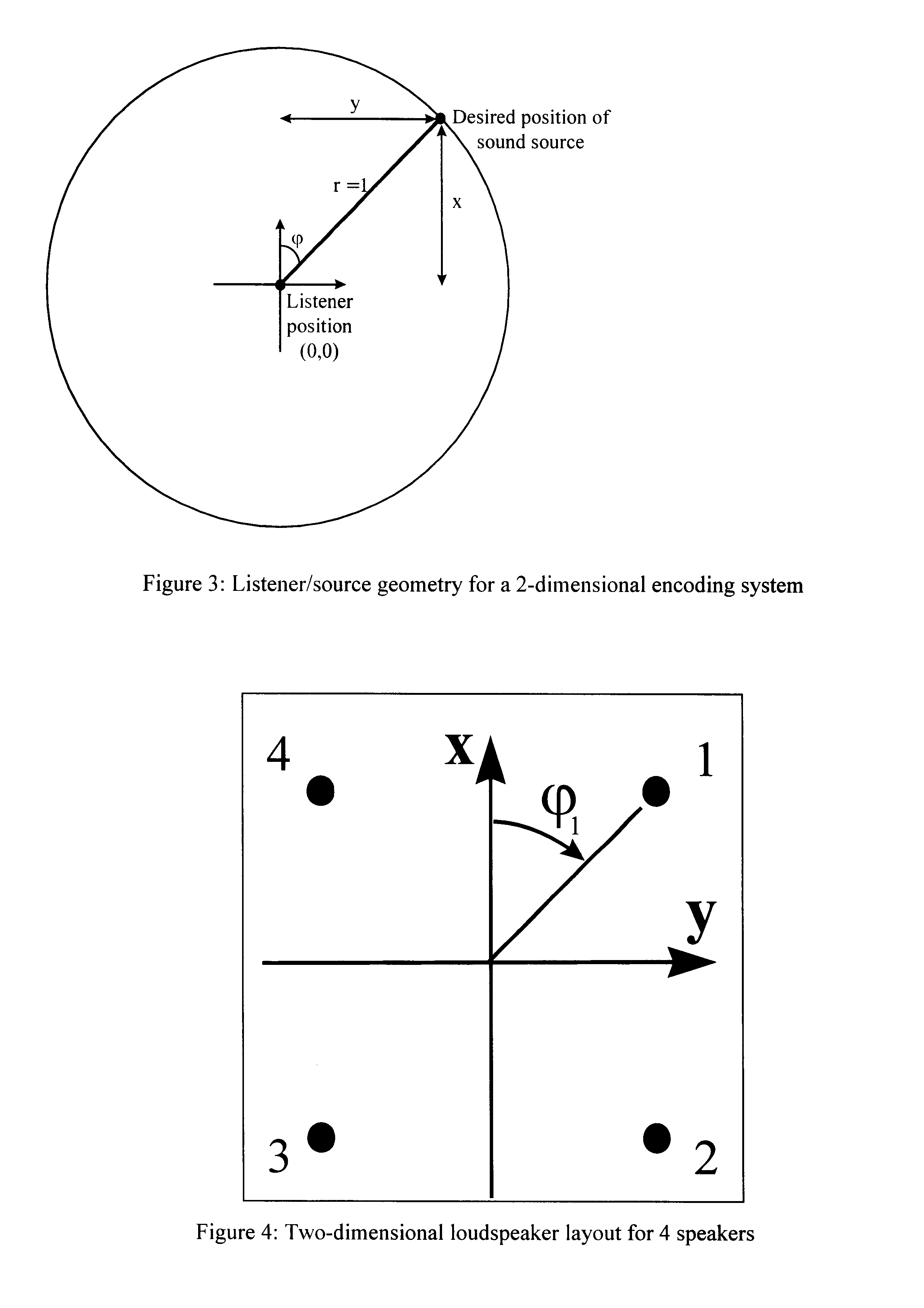Reproduction of spatialized audio
- Summary
- Abstract
- Description
- Claims
- Application Information
AI Technical Summary
Problems solved by technology
Method used
Image
Examples
Embodiment Construction
With a two-dimensional system the encoded spatialised sound is in one plane only, the (x,y) plane. Assume that the sound source is positioned inside a unit circle, i.e. x.sup.2 +y.sup.2.ltoreq.1 (see FIG. 3). For a monophonic signal positioned on the unit circle:
x=cos(.phi.)
y=sin(.phi.)
where .phi. is the angle between the origin and the desired position of the sound source, as defined in FIG. 3.
The B-Format signal comprises three signals W,X,Y, which are defined (see the Malham and Myatt reference above) as: ##EQU1##
X=S.multidot.cos(.phi.)
Y=S.multidot.sin(.phi.)
Where S is the monophonic signal to be spatialised.
When the virtual sound source is on the unit circle; x=cos(.phi.) and y=sin(.phi.), hence giving equations for W,X,Y in terms of x & y: ##EQU2##
X=x.multidot.S Front-Back signal
Y=y.multidot.S Left-Right signal
As also described by Malham and Myatt, the Decoder operates as follows. For a regular array of N speakers the pantophonic system decoding equation is: ##EQU3##
where .phi....
PUM
 Login to View More
Login to View More Abstract
Description
Claims
Application Information
 Login to View More
Login to View More - R&D
- Intellectual Property
- Life Sciences
- Materials
- Tech Scout
- Unparalleled Data Quality
- Higher Quality Content
- 60% Fewer Hallucinations
Browse by: Latest US Patents, China's latest patents, Technical Efficacy Thesaurus, Application Domain, Technology Topic, Popular Technical Reports.
© 2025 PatSnap. All rights reserved.Legal|Privacy policy|Modern Slavery Act Transparency Statement|Sitemap|About US| Contact US: help@patsnap.com



